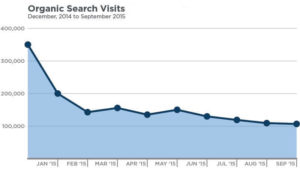How much is too much? Faceted navigation and SEO
Contributor Eric Enge shares guidelines and handy workarounds you can follow to avoid indexing ‘too many’ faceted navigation pages.
On e-commerce sites, faceted navigation plays a critical role in allowing consumers to find the products they want quickly.
Major sites normally offer a variety of filters (show a subset of products), sort orders (show products in different orders) and pagination (break long lists of products into multiple pages).
From a search engine optimization (SEO) perspective, creating more pages that break out different aspects of products users might search on is generally a good thing. Offering more pages enables you to compete more effectively for the long-tail of search for your brand. These uniform resource locators (URLs) also make it easy for users to send links to friends or family members to view specific product selections.
Too much of a good thing
However, it’s also possible for there to be too much of a good thing. You can reach a point where you’re creating too many pages, and search engines will begin to see those incremental pages as thin content.
Go too far, and you can even receive a thin content penalty like this one:

But, even without receiving a penalty, adding too many pages can result in a drop in traffic, similar to what you see here:

So how do you know what’s too much? That’s what I’ll address in today’s post.
[Read the full article on Search Engine Land.]
Opinions expressed in this article are those of the guest author and not necessarily Marketing Land. Staff authors are listed here.

Dive deep into marketing technology issues and ideas at MarTech®
Join the martech community October 1-3 in Boston, MA for vendor-agnostic, graduate-level marketing technology and operations insights. If you’re responsible for driving digital transformation in this software-powered world, then you don’t want to miss out on MarTech. View rates and register today!



